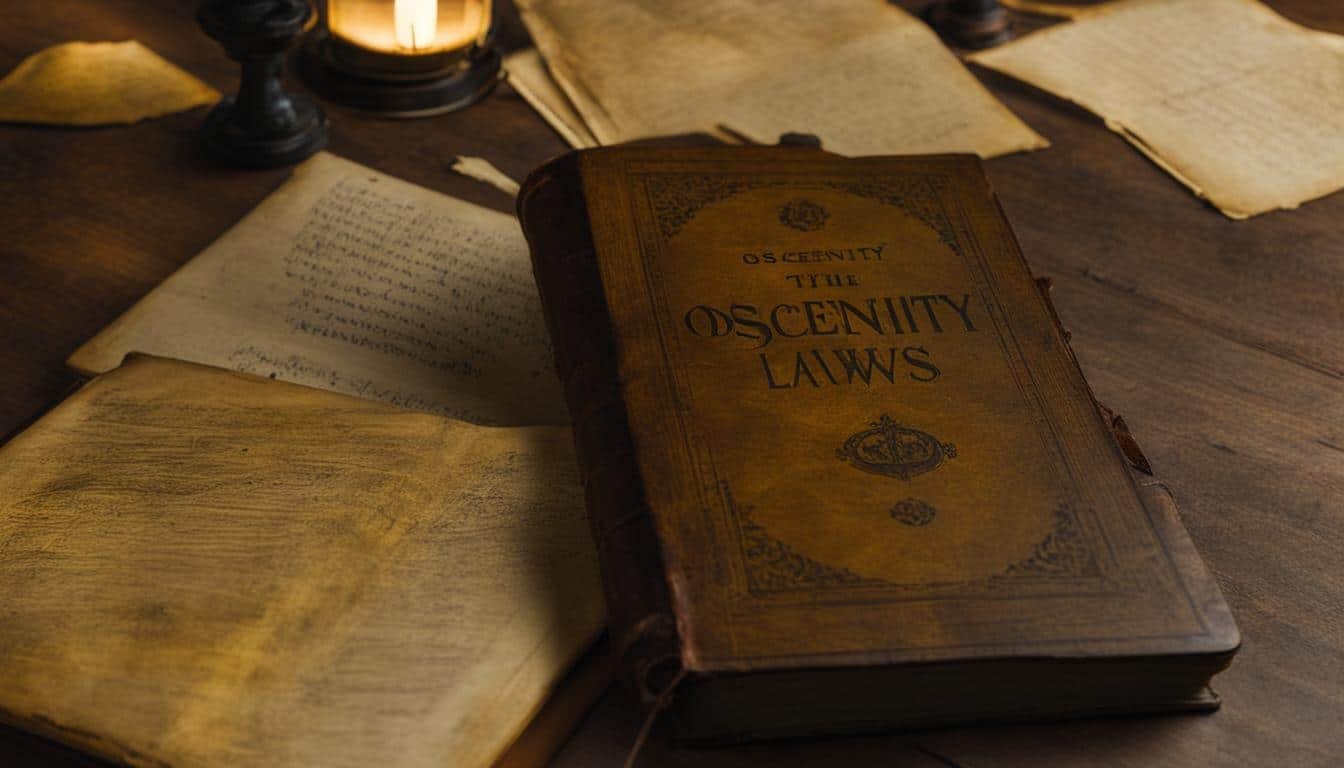Welcome to our article on obscenity in law. In this section, we will provide you with an overview of the First Amendment, freedom of speech, and how it relates to obscenity law in the United States. We will also explore the role of the Supreme Court in shaping constitutional law and the criteria used to determine whether material is considered obscene. So, let’s dive in and gain a deeper understanding of this important legal topic.
Key Takeaways:
- The First Amendment protects the freedom of speech, including artistic expression and even nude dancing.
- Obscenity is not protected by the First Amendment and falls outside its scope.
- The landmark case of Roth v. United States established the constitutional law of obscenity and introduced the Miller test to determine if material is obscene.
- The Miller test considers community standards, the appeal to prurient interest, the depiction of sexual conduct, and the lack of serious value in determining obscenity.
- Obscenity can be banned due to its lack of social importance and its contradiction with societal moral standards.
Historical Rulings on Obscenity and Pornography
The issue of obscenity and pornography has long been a topic of debate in the legal sphere, with the Supreme Court at the forefront of making critical rulings. These rulings have often struggled to provide clear definitions of obscenity and pornography, leading to inconsistency and controversy. The lack of uniform interpretation has made it challenging to determine what materials can be considered obscene.
Arguments surrounding the restrictions on pornography focus on the potential harm it may cause to individuals and society. Critics of pornography argue that it is immoral and harmful, particularly in its objectification and demeaning portrayal of women. However, proponents of First Amendment rights contend that banning pornography infringes on the freedom of expression.
The Supreme Court’s historical rulings on obscenity and pornography reflect the ongoing struggle to strike a balance between protecting individual rights and addressing potential societal harm. The lack of clear definitions and constitutional basis has been criticized, highlighting the need for informed decision-making and objective standards.
As the debates continue, it remains challenging for the courts to navigate the complex landscape of obscenity and pornography. The historical rulings have emphasized the importance of considering the potential harmful effects while upholding First Amendment protections. With ongoing advancements in technology and changing societal norms, the need for clarity and objective definitions becomes increasingly essential in shaping future legal decisions.
The Supreme Court’s Evolving Stance
The Supreme Court has faced criticism for its inconsistency and lack of clear guidelines in defining obscenity and pornography. The need for objective standards is evident, as the debates continue to unfold in the legal system. To address this issue, further exploration and refinement of the legal framework surrounding obscenity and pornography are necessary to ensure fairness, protection, and respect for individual rights.
| Supreme Court Ruling | Summary |
|---|---|
| Miller v. California (1973) | The Court established the Miller test, which considers community standards, prurient interest, offensiveness, and artistic or scientific value when determining obscenity. |
| Reno v. ACLU (1997) | The Court struck down certain provisions of the Communications Decency Act, signaling a recognition of the importance of protecting free speech in the digital age. |
| Ashcroft v. Free Speech Coalition (2002) | The Court ruled against a law that banned virtual child pornography, affirming that even depictions of illegal activities may be protected under the First Amendment. |
The Need for Clarity and Objective Definitions
The issue of defining obscenity and pornography has long been a challenge for lawmakers and the court system. Various commissions, such as the Commission on Obscenity and Pornography, have attempted to establish clear definitions, but reaching a consensus has proven difficult.
One of the main hurdles in defining obscenity is its subjective nature. What one person may deem as obscene, another may consider a form of artistic expression. This subjectivity makes it challenging to determine what falls within the bounds of protected First Amendment rights and what can be legally regulated.
Proponents of restrictions on pornography argue that it can cause harm to individuals and society, particularly in its portrayal of women as sexual objects. They believe that such depictions contribute to the objectification and degradation of women, and may even be linked to crimes against women.
On the other hand, opponents of restrictions on pornography contend that it is a matter of free speech and personal choice. They argue that the harm caused by pornography has been exaggerated and that individuals should have the freedom to consume and create adult content without government interference.
Source Links
- https://www.everycrsreport.com/reports/95-804.html
- https://www.law.cornell.edu/constitution-conan/amendment-1/obscenity-overview
- https://www.mckendree.edu/academics/scholars/issue10/mueller.htm







